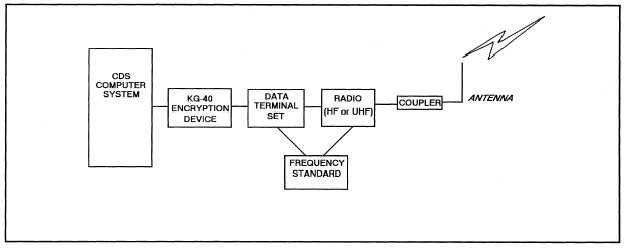After completing this chapter you should be able to:
Describe the composition of a typical Link-11 system.
Describe the operation of the Link-11 transmission and receive cycles.
Describe the six operating modes of the Link-11 system.
Describe the function of the Link-11 encryption (security) device.
Describe the audio tones generated by the Link-11 Data Terminal Set.
Describe the word formats used to transmit Link-11 tactical data.
Describe the message formats used in the various Link-11 operating
modes.
Describe the operation of the Link-11 Data Terminal Set.
LINK-11 FUNDAMENTALS
To monitor the operation of and perform
maintenance on the Link-11 system, you must
understand how the different pieces of equipment
interact with each other. Let’s take a look at a basic
Link-11 system.
LINK-11 SYSTEM OVERVIEW
A typical shipboard Link-11 communications
system (figure 2-2) consists of the following
components:
the CDS digital computer, a
cryptographic device, the Link-11 data terminal set,
the communications switchboard, and the HF or UHF
radio set transceivers (transmitter/receiver), an
antenna coupler, and an antenna. The data terminal
set is the center of the Link-11 system and is covered
in detail later in this chapter. The communications
switchboard is used to select the desired HF or UHF
transceiver. An external frequency standard is also
part of many Link-11 systems. Additionally, the
Shipboard Gridlock System (SGS) is installed on
many ships. On SGS-equipped ships, an AN/UYK-20
is placed in the line between the CDS computer and
the crypto device.
Figure 2-2.—The Link-11 communications system.
2-2


